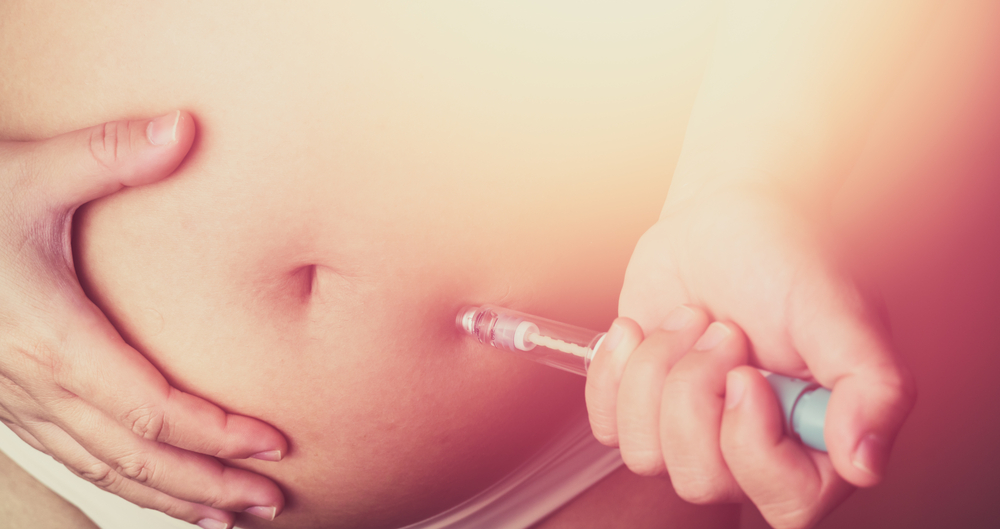What is Ovarian Hyperstimulation Syndrome (OHSS), and how can I prevent it?

Ovarian hyperstimulation syndrome (OHSS) is a potential, albeit very rare, complication of fertility treatment (occurring in less than 1% of women receiving in vitro fertilization (IVF) treatment). (1) OHSS typically results from overstimulation of the ovaries during a cycle of IVF and is generally mild and temporary. Fortunately, with close monitoring, OHSS can usually be prevented and easily managed.
The goal of ovarian stimulation is to have multiple follicles grow and to stimulate multiple eggs to become mature and available for egg retrieval. In very few cases of IVF, the ovaries become overly stimulated, leading to discomfort and pain. In the most severe cases of OHSS, which is rarely encountered these days, women may experience difficulty breathing, weight gain, and decreased urination. (1)
In most cases, OHSS resolves quickly and without intervention within 2 weeks. Even in severe cases, the outlook is positive if symptoms are treated in a timely manner. Moreover, where the fertility treatment is successful, OHSS poses no measurable risk to your baby’s health. So, this begs the question: How do you know if you will get OHSS, and what can you do to prevent it?
Before diving into the tangible strategies that may be taken to prevent OHSS, it is important to recognize associated risk factors. These include having polycystic ovary syndrome (PCOS), many follicles, a high level of estrogen prior to the hCG trigger, a high basal AMH (>3.36 ng/mL), and previous episodes of OHSS. (1,2) While your doctor will perform regular ultrasounds to check follicle development and blood tests to check hormone levels throughout the course of treatment, it is important to monitor your own symptoms.
Now, what can you do to prevent OHSS? The following strategies may be taken to reduce the risk of OHSS.
Adjusting medication
Two small studies involving IVF patients at high risk for OHSS demonstrated that a reduced dose human chorionic gonadotrophin (hCG) trigger eliminated the occurrence of severe OHSS. (3,4) Another study showed that low dose hCG was able to reduce the risk of both early and severe OHSS by factors of 7 and 4, respectively. (5) These studies suggest that lowering the hCG trigger doses may be effective at reducing the overall risk of OHSS without compromising the number of oocytes retrieved and embryos available for transfer.
Avoiding hCG
Given that evidence suggests hCG plays a role in the development of OHSS, it is a natural consideration that avoiding hCG from would reduce the risk of OHSS. (1) Three randomized controlled trials demonstrated that patients receiving a gonadotropin-releasing hormone (GnRH) trigger as opposed to an hCG trigger had similar results in terms of number of oocytes retrieved, fertilization rates, and embryo quality score, with reduction or elimination of OHSS. (6)
Adding medication
Adding dopamine agonists (dopamine activators) after the hCG trigger may reduce the incidence of OHSS. Results from twenty-two randomized controlled trials indicate that dopamine agonists are successful at reducing the incidence of moderate to severe OHSS in women who are at high-risk of developing the condition. (7)
Embryo cryopreservation
The method of frozen embryo transfer (FET) has been increasingly used following the publication of clinical evidence suggesting that the risk of OHSS could be minimized, particularly in women with PCOS or high response to ovarian stimulation. The definition for high response varies, but criteria that have been typically used to define this threshold include a serum estradiol of >6000 pg/mL on the day of trigger and >30 oocytes retrieved. (8) A recent multi-center randomized controlled trial found no differences in the ongoing pregnancy rates and live birth rates between women who elected to freeze all embryos versus a fresh embryo transfer.
The methods discussed above are both biologically and clinically validated. Your doctor is best suited to offer you advice with respect to the optimal approach to preventing OHSS in your individual scenario; however, understanding strategies that have been demonstrated to be effective may help you feel more at ease when considering IVF treatment, or in the rare event of an OHSS diagnosis. Everybody is different, so listen to your symptoms as your journey continues!
(1) Tokhy, OE., Kopeika, J., & El-Toukhy, T. (2016). An update on the prevention of ovarian hyperstimulation syndrome. Women’s health (London, England), 12(5), 496-503.
(2) Fiedler, K., & Ezcurra, E. (2012). Predicting and preventing ovarian hyperstimulation syndrome (OHSS): the need for individualized not standardized treatment. Reproductive biology and endocrinology: RB&E, 10, Article 32.
(3) Chen, X., Chen, S-L., He, Y-X., & Ye, D-S. (2013). Minimum dose of hCG to trigger final oocyte maturation and prevent OHSS in a long GnRHa protocol. Journal of Huazhong University of Science and Technology, 33(1), 133-136.
(4) Tiboni, GM., Colangelo, EC., & Ponzano, A. (2016). Reducing the trigger dose of recombinant hCG in high-responder patients attending an assisted reproductive technology program: an observational study. Drug design, development and therapy, 10, 1691-1694.
(5) Kashyap, S., Parker, K., Cedars, MI., & Rosenwaks, Z. (2010). Ovarian hyperstimulation syndrome prevention strategies: reducing the human chorionic gonadotropic trigger dose. Seminars in reproductive medicine, 28(6), 475-785.
(6) Humaidan, P., Kol, S., Papanikolaou, EG., & Copenhaven GnRH Agnoist Triggering Workshop Group. (2011). GnRH agonist for triggering of final oocyte maturation: time for a change of practice?. Human reproduction update, 17(4), 510-524.
(7) Tang, H., Mourad, SM., Wang, A., Zhai, S-D., & Hart, RJ. (2021). Dopamine agonists for preventing ovarian hyperstimulation syndrome. Cochrane database of systematic reviews, 4(4), CD008605.
(8) Asch, RH., Li, HP., Balmaceda, JP., Weckstein, LN., & Stone, SC. (1991). Severe ovarian hyperstimulation syndrome in assisted reproductive technology: definition of high risk groups. Human reproduction, 6(10), 1395-1399.
